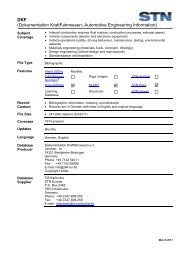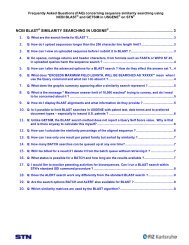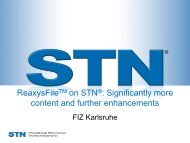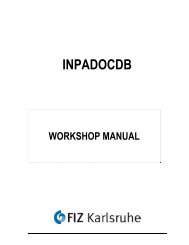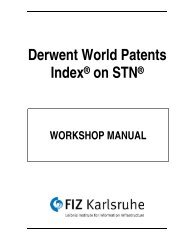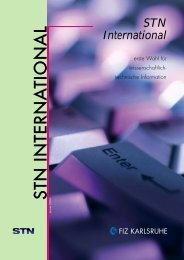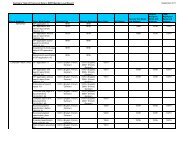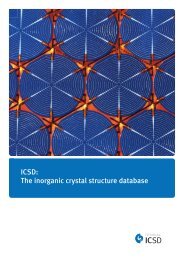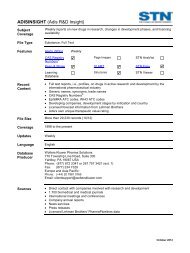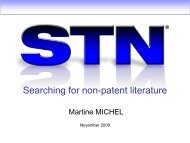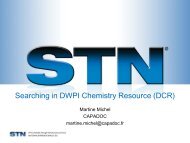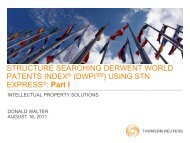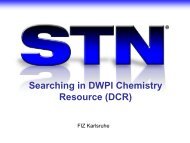note - FIZ Karlsruhe
note - FIZ Karlsruhe
note - FIZ Karlsruhe
Create successful ePaper yourself
Turn your PDF publications into a flip-book with our unique Google optimized e-Paper software.
Appendices<br />
IV: Feature keys in DGENE feature tables<br />
Peptide sequences<br />
Peptide sequence Feature tables have a limited number of possible feature keys. Each feature can<br />
be qualified with a “label”, and can be further described by a “<strong>note</strong>”. Notes are used when a label<br />
is inappropriate or when the use of a given label requires further explanation.<br />
An example of a peptide sequence feature table<br />
FEATURE TABLE:<br />
Key |Location|Qualifier|<br />
=============+========+=========+=======================<br />
Peptide |1..23 |label |Signal_peptide<br />
Protein |24..255 |label |Mature_protein<br />
Domain |24..186 |<strong>note</strong> |"extracellular domain"<br />
Region |186..213|<strong>note</strong> |"transmembrane region"<br />
Domain |214..255|<strong>note</strong> |"cytoplasmic domain"<br />
Modified-site|138..140|<strong>note</strong> |"Asn is N-glycosylated"<br />
Modified-site|149..151|<strong>note</strong> |"Asn is N-glycosylated"<br />
Feature keys for peptide sequences<br />
Feature Definition<br />
Active-site De<strong>note</strong>s the residues constituting an active site of a polypeptide<br />
Binding-site Site of molecule- or ion- or non-covalent binding to a polypeptide<br />
Cleavage-site Polypeptide or peptide cleavage site<br />
Cross-links Bonds linking the sequence to an adjacent polypeptide chain<br />
Disulfide-bond Identifies residues connected by disulphide bonds<br />
Domain Distinct polypeptide functional regions<br />
Duplication Regions evolved by sequence duplication<br />
Inhibitory-site Residues constituting a polypeptide’s inhibitory site<br />
Misc-difference Sequence differs from that presented in the sequence part of the record in a way that cannot be<br />
described using any other feature key<br />
Note Used mainly to indicate a generic site i.e. x in the sequence is not unknown and not simply a<br />
modified site, in which case the “Modified-site” term is used. If x is generic and modified, Miscdifference<br />
is used, x is defined as a label and the modification is defined using a <strong>note</strong><br />
Modified-site Site of modified amino acid in polypeptide sequence<br />
Peptide Peptides derived from the displayed sequence<br />
Polypeptide Mature polypeptide derived from the displayed sequence<br />
Region Biologically significant polypeptide sequence regions not covered by other polypeptide keys<br />
Thiolester-bond Identifies residues connected by thiolester bonds<br />
Helpful<br />
HINT<br />
For further reading - An introduction to GENESEQ:<br />
http://www.stn-international.com/stn_biosequence_searching_dgene.html<br />
Page 128 | GENESEQ on STN (DGENE) Workshop Manual



